AustLit
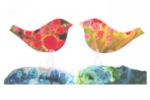
-
This Exhibition brings together a number of texts from the Asian-Australian Children's Literature and Publishing (AACLAP) subset which feature mythical creatures. For instance, traditionally, the Chinese have four benevolent animals which represent the four points of the compass; they are the dragon, phoenix, tortoise, and unicorn. The dragon is considered the most powerful and important of these. Along with the mermaid, these creatures also play an important symbolic role in a number of other Asian cultures. This collection of resources, while focused on mythical creatures of Asian folklore, includes reference to, and resources on, mythical creatures from other traditions such as Australian Aboriginal and European beliefs and legends so that similarities and differences can be noted and influences traced.
-
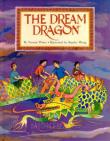 This image has been sourced from online.'High in the mountains, where mists hang like spider webs spun across the peaks, lived a dream dragon. On silent nights she tumbled into the dreams of the people in a remote village ... One night the dream dragon did not come. Not only is this ancient Chinese tale beautifully retold, with vividly clear and colourful imagery, the story is intrinsically a story of hope.'See full AustLit entry
This image has been sourced from online.'High in the mountains, where mists hang like spider webs spun across the peaks, lived a dream dragon. On silent nights she tumbled into the dreams of the people in a remote village ... One night the dream dragon did not come. Not only is this ancient Chinese tale beautifully retold, with vividly clear and colourful imagery, the story is intrinsically a story of hope.'See full AustLit entry
(Source: Teaching and Learning for Peace Foundation website)
(...more)A gentle story told in the style of an ancient folktale, which highlights the importance of dreams, storytelling and striving for peace.
-
In China, Ming has a business as 'Dispenser of Magic from Pomelo Tree.' The pomelo tree is the only thing that can stop dragons from eating people. Ming has a good business, but when his friends tell him that they are moving to Bendigo, Victoria, to find gold, Ming agrees to go along with them.See full AustLit entry
However, upon arriving in Bendigo, the friends find that discovering gold is harder than they had anticipated. When Ming's friends decide to order a fiery dragon to bring them luck, Ming knows he needs to find a pomelo tree. (...more)This short story is from the collection Emu Stew: An Illustrated Collection of Stories and Poems for Children edited by Patricia Wrightson in 1976. A pomelo is a citrus fruit native to South East Asian regions and once was believed to be a safeguard against dragons. Ming, as owner of a pomelo tree, was much in demand; yet there is some irony here as the dragons of the East were believed to be benevolent dragons.
-
Bendigo Chinese Association, Awakening the Dragon 09 Pt 1
This YouTube clip shows the Awakening of the Dragon dance being celebrated at the Bendigo Chinese Association's celebrations in 2009. See the note on the AustLit work record for The Magic of the Pomelo Tree (see entry above) to understand the connection between that story and this festival which is held every Easter in Bendigo, Victoria, Australia.
//www.youtube.com/embed/j7aAzPlAUAM -
The Adventures of a Little Dragon is a story of two mythical creatures, the Australian bunyip and the Chinese dragon. When a returning swallow tells Ciwen, a Chinese dragon, about a big island in the south he decides to see it for himself. After a long flight over mountains and oceans Ciwen arrives in Australia where he makes friends, not only with a kangaroo, an emu and a possum but also a bunyip. The animal friends accompany Ciwen on a tour of Australia but eventually it is time for the little dragon to return home. (...more)See full AustLit entry
This picture book for the young brings together mythical creatures from two cultures: the dragon from China and the bunyip from Australia. What other mythical creatures do these countries share?
-
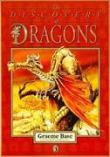 This image has been sourced from online.This book documents the work of a group of Victorian scientists, who describe and catalog dragons from around the world, including everything from their natural habitats to their unusual eating habits. (...more)See full AustLit entry
This image has been sourced from online.This book documents the work of a group of Victorian scientists, who describe and catalog dragons from around the world, including everything from their natural habitats to their unusual eating habits. (...more)See full AustLit entryA light-hearted look at the discovery of dragons accompanied by some spectacular illustrations and letters of suspect origin.
-
 Courtesy of Walker Books."This is the story of Yin, an only child, who lives with her Grandmother and parents, and her very loveable and loyal Dragon. When Yin's Grandmother has to leave the family home, Yin's Dragon comes to the rescue." (source: publisher's website) (...more)See full AustLit entry
Courtesy of Walker Books."This is the story of Yin, an only child, who lives with her Grandmother and parents, and her very loveable and loyal Dragon. When Yin's Grandmother has to leave the family home, Yin's Dragon comes to the rescue." (source: publisher's website) (...more)See full AustLit entryThis story seems to be a variation on the 'invisible friend' theme. Yin, who is an only child, has a pet dragon in the garden that no one else knows about. When Yin's grandmother Po Po has to leave, the dragon also disappears. Yin is most unhappy until the family issues are sorted and both Po Po and Dragon return.
-
 This image has been sourced from online.'Kumiko doesn't like going to bed. She can't sleep. The reason she can't sleep is the giant dragon that sits outside her bedroom window every single night. So one night she plucks up the courage to ask the dragon to leave, not knowing that the truth she is about to discover is more thrilling than anything she could ever have imagined.' (Publisher's blurb) (...more)See full AustLit entry
This image has been sourced from online.'Kumiko doesn't like going to bed. She can't sleep. The reason she can't sleep is the giant dragon that sits outside her bedroom window every single night. So one night she plucks up the courage to ask the dragon to leave, not knowing that the truth she is about to discover is more thrilling than anything she could ever have imagined.' (Publisher's blurb) (...more)See full AustLit entryThere are two distinct cultural traditions of dragons: the European dragon derived from European folk traditions and ultimately related to Greek and Middle Eastern mythologies; and the Eastern or Chinese dragon with counterparts in Japan, Korea, and other Eastern Asian countries such as Vietnam. European dragons are generally malevolent while the Chinese dragon, as is evident from this text, is more often benevolent.
-
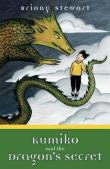 This image has been sourced from online.'Continues the fantasy adventure of Kumiko, a young Japanese girl who is guarded by the dragon, Tomodo. In this sequel to the beautifully written Kumiko and the Dragon, danger surrounds Kumiko's family as the sinister shadow catchers kidnap Kumiko's sister, Arisu, seeking to absorb the dragons' magical powers through the royal human bloodline of Kumiko's family. Kumiko is the only one who can defeat the shadow catchers. She alone has the power to rescue her little sister and to restore order to the magical world of the dragons. (...more)See full AustLit entry
This image has been sourced from online.'Continues the fantasy adventure of Kumiko, a young Japanese girl who is guarded by the dragon, Tomodo. In this sequel to the beautifully written Kumiko and the Dragon, danger surrounds Kumiko's family as the sinister shadow catchers kidnap Kumiko's sister, Arisu, seeking to absorb the dragons' magical powers through the royal human bloodline of Kumiko's family. Kumiko is the only one who can defeat the shadow catchers. She alone has the power to rescue her little sister and to restore order to the magical world of the dragons. (...more)See full AustLit entryThis is the sequel to the book Kumiko and the Dragon. In recent times dragons have enjoyed a resurgence in popularity due, in part, to a spate of fantasy novels such as these Kumiko texts which are based on ancient stories and mythologies surrounding dragons.
-
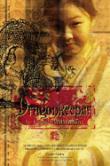 Cover image courtesy of publisher.In Ancient China during the Han Dynasty a slave girl saves the life of an ageing dragon and escapes her brutal master. Pursued by a ruthless dragon hunter, the girl and the dragon cross China, carrying with them a mysterious stone that must be protected. (...more)See full AustLit entry
Cover image courtesy of publisher.In Ancient China during the Han Dynasty a slave girl saves the life of an ageing dragon and escapes her brutal master. Pursued by a ruthless dragon hunter, the girl and the dragon cross China, carrying with them a mysterious stone that must be protected. (...more)See full AustLit entryThis is the first book in the Dragonkeeper trilogy by Carole Wilkinson. It is the story of a young slave girl who does not believe she is worthy of a name but discovers the strength and courage required to undertake a dangerous journey.
-
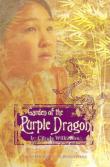 This image has been sourced from online.'This story is set in Ancient China, during the Han Dynasty. Ping thinks she is safe hiding in the shadow of the Tai Shan mountains. Here she struggles to care for Kai, the baby dragon she is responsible for. But even in her remote mountain hideout, Ping's enemies find her. It is Kai they want. Who can Ping trust? It is impossible to distinguish friend from foe. The easy road beckons. Will they find sanctuary in the Garden of the Purple Dragon? Will Ping embrace her true destiny?' The Dragonkeeper trilogy. (...more)See full AustLit entry
This image has been sourced from online.'This story is set in Ancient China, during the Han Dynasty. Ping thinks she is safe hiding in the shadow of the Tai Shan mountains. Here she struggles to care for Kai, the baby dragon she is responsible for. But even in her remote mountain hideout, Ping's enemies find her. It is Kai they want. Who can Ping trust? It is impossible to distinguish friend from foe. The easy road beckons. Will they find sanctuary in the Garden of the Purple Dragon? Will Ping embrace her true destiny?' The Dragonkeeper trilogy. (...more)See full AustLit entryThis is the second book of the Dragonkeeper trilogy. In this book Ping is entrusted with the care of a baby dragon, Kai, son of Danzi from the first book. This task entails a lot of responsibility for Ping but also provides many lighthearted moments as well.
-
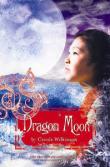 This image has been sourced from online.See full AustLit entry
This image has been sourced from online.See full AustLit entry'Ancient China. Han Dynasty. Ping and Kai have travelled far, but their journey is not yet over. Danger stalks them. Ping must find Kai a safe place. But how?
'When a hidden message from Danzi makes the way clear, Ping knows that once again the journey of a thousand li begins with a single step.' (Publisher's blurb)
(...more)In this final book of the Dragonkeeper trilogy Ping and Kai continue their journey across China in search of the safe haven for Kai that Danzi has decribed in a cryptic message. Ping has to unravel the clues provided and find a sanctuary for Kai, possibly the last dragon.
-
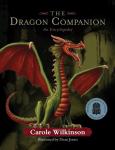 Courtesy of Black Dog Books"The Dragon Companion is an A-Z encyclopedia of dragons. Within its pages you will find many dragons. Though there are some modern dragon stories, most of the stories have been told for hundreds, sometimes thousands of years. As well as stories, you will find all sorts of dragonish information, from how many claws they have, to uses for their blood." (Source: Author's website) (...more)See full AustLit entry
Courtesy of Black Dog Books"The Dragon Companion is an A-Z encyclopedia of dragons. Within its pages you will find many dragons. Though there are some modern dragon stories, most of the stories have been told for hundreds, sometimes thousands of years. As well as stories, you will find all sorts of dragonish information, from how many claws they have, to uses for their blood." (Source: Author's website) (...more)See full AustLit entryA collection of dragon stories from around the world and thoughout time collated by Carole Wilkinson, the author of the Dragonkeeper trilogy. As well as the dragon legends and tales it contains maps, colourful illustrations, a glossary and references used in compiling this collection. A useful starting point on all things 'dragon'.
-
The phoenix is one of the four benevolent animal symbols representing the four points of the compass. This came about as, traditionally, the Chinese believed that there was a male (yang) and female (yin) principle in all things in the universe. For instance the sun was male and the moon female. Dragons represent the male and the phoenix represents the female. The phoenix is therefore often associated with the Chinese Empress while the dragon is the symbol of the Emperor.
-
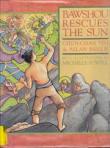 This image has been sourced from online.'Thousands of years ago, the King of Devils steals the sun, plunging the land into darkness. Bawshou sets out to rescue the sun, a task his father attempted unsuccessfully. Accompanied by a golden phoenix and guided by a shining star--the spirit of his dead father--Bawshou crosses swollen rivers, outwits evil villagers and eventually battles the King of Devils himself before liberating the sun from the devils' rocky outcropping.' (Source: Bookseller's website) (...more)See full AustLit entry
This image has been sourced from online.'Thousands of years ago, the King of Devils steals the sun, plunging the land into darkness. Bawshou sets out to rescue the sun, a task his father attempted unsuccessfully. Accompanied by a golden phoenix and guided by a shining star--the spirit of his dead father--Bawshou crosses swollen rivers, outwits evil villagers and eventually battles the King of Devils himself before liberating the sun from the devils' rocky outcropping.' (Source: Bookseller's website) (...more)See full AustLit entryGiven the beliefs relating to the phoenix in Chinese mythology referred to above the phoenix, in this story, can be seen as a powerful and symbolic companion for Bawshou on his quest.
-
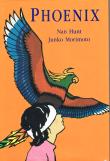 This image has been sourced from online.See full AustLit entry
This image has been sourced from online.See full AustLit entryA young girl with failing eye-sight and facing a risky operation befriends a phoenix which is afraid of fire. The choices each has to make are difficult but this hardship creates great strength.
(Source: NLA catalogue)
(...more)The phoenix is another of the mythical creatures of Asia that is also shared by other cultures around the world. It is said to be reincarnated by rising from the ashes of its burnt body. This story is set in the Middle-East and Australia.
-
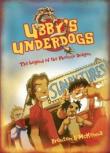 Image courtesy of Magabala BooksSee full AustLit entry
Image courtesy of Magabala BooksSee full AustLit entryUbby is a smart, young Aboriginal girl who is twice as tough as the streets she lives on. She is the leader of a rag-tag group of youth known as the 'Underdogs'. When Ubby meets Sai Fong, a Chinese girl who has arrived fresh off the boat from Beijing, street life in Broome takes on a multitude of new dimensions. From the moment the two girls meet, they find themselves immersed in a series of bizarre adventures influenced by Aboriginal and Chinese myths and legend, and secrets never before exposed.
(...more)This book, which has characteristics of both graphic novels and comic books, uses the multicultural town of Broome, Western Australia as a setting for a story which draws on both Aboriginal and Chinese mythologies. The action unleashes the phoenix dragon from Chinese mythology and the sandpaper dragon of Aboriginal legends.
-
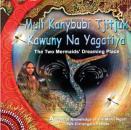 Image courtesy of publisher's website.See full AustLit entry
Image courtesy of publisher's website.See full AustLit entry'Two mermaids travel from their dreaming site at Altjama, across the Moyle River flood plains to Yederr and back to Altjama.' (Source: Publisher's website)
(...more)This is another mermaid Dreaming story. It may seem surprising that the Aboriginal peoples of inland Australia have mermaid dreaming stories but, just as other countries in the world have stories of inland mermaids, so, too, do the Aboriginal peoples. In fact, mermaids were said to occupy lots of different waterways, even waterholes in oases in the middle of the desert.
-
In this book the people of the Wugularr community in the Northern Territory share one of their traditional stories, The Mermaid and the Serpent. It tells the story of how two mermaids came to live in the big waterhole at the base of Wurreiluk or Beswick Falls. The mermaids can be heard talking and laughing when it is really quiet. These mermaids have the power of the Baby Dreaming law. This means that if a woman swims in the waterhole she might get pregnant. The story is also recounted in the Dalabon language and there is a glossary at the back of the book.
-
The Dust Echoes website site contains twelve animated dreaming stories from Central Arnhem Land. Enter the site and click on the third story Mermaid, which tells the story of a song man who wanders off from his family and lives with mermaids under water. Eventually he misses his family and must make a decision ...
The site contains Study Guides, a Glossary and Story Wall Paper.
-
Dust Echoes : "Mermaid Story"
A gothic bush tale about an elderly man's search for purpose in a mysterious forest that holds the answer in the form of three beautiful mermaids. Part of ABC's critically acclaimed Dust Echoes series.
//www.youtube.com/embed/nSbHwDoj4OM -
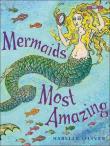 See full AustLit entry
See full AustLit entry'"For as long as anyone can remember, mermaids have swum through our stories and splashed through our dreams. . . . " Where did these mythical creatures come from? What if they were real?
(...more)
'"Mermaids Most Amazing" provides a comprehensive introduction to these beloved creatures, rendered in beautifully evocative, folk art-style collages and illustrations. You'll meet the fish-tailed goddesses of ancient Polynesia; crafty water sprites of the Pacific Northwest; fake mermaids from British carnivals of the 1800s; and the dugong, whose human-like features and behavior have been mistaken for mermaids by sailors throughout the ages.This text catalogues an amazing array of different mermaids and mermen that are rumoured to have inhabited the waterways of the world. It details documented sightings of mermaids and relates a number of incidents involving deliberate "fakes". It contains serious mythologies and light-hearted commentaries as well as detailed illustrations of what particular mermaids might have looked like.
You might be interested in...



